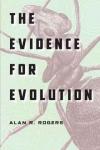
NCSE is pleased to offer a free preview of Alan R. Rogers's The Evidence for Evolution (University of Chicago Press, 2011). The preview consists of chapter 5, "Peaks and Valleys," in which Rogers discusses the evolution of complex adaptations in the evolutionary landscape. He summarizes, "the adaptive landscape is rugged, with lots of peaks and valleys. ... We saw ... that complex adaptations can evolve via a series of small, individually advantageous changes. No valley need be involved. ... On the other hand, we need not appeal to miracles even if evolution does cross valleys. ... In small populations, gene frequences are buffeted by a variety of random forces, and these can push populations across valleys. We understand the mechanisms involved, and we have seen them operate in the laboratory. Evolutionists may argue about how often they happen in nature, but one thing is clear: there is no plausible basis for the argument that adaptive evolution requires miracles."
Endorsing The Evidence for Evolution, Steven Pinker writes, "Alan Rogers addresses the political controversy over the theory of evolution (there's no longer any scientific controversy) in the best scientific spirit: with evidence and logic. For anyone with an open mind, a curiosity about the natural world, and a desire to see controversies settled with evidence rather than rhetoric, this is an invaluable contribution and a fascinating read." And Warren D. Allmon, in a review forthcoming in Reports of the NCSE, applauds "this fresh and splendid little book" for "its focus on precisely why such indirect evidence actually favors evolution over its alternatives. The answer is hardly novel, but it is strangely missing (or at least dramatically deemphasized) in virtually all presentations of the topic: the most abundant evidence for evolution is that the characters of organisms are not scattered randomly, but rather are arranged in such a pattern that implies a hierarchical, branching tree."
